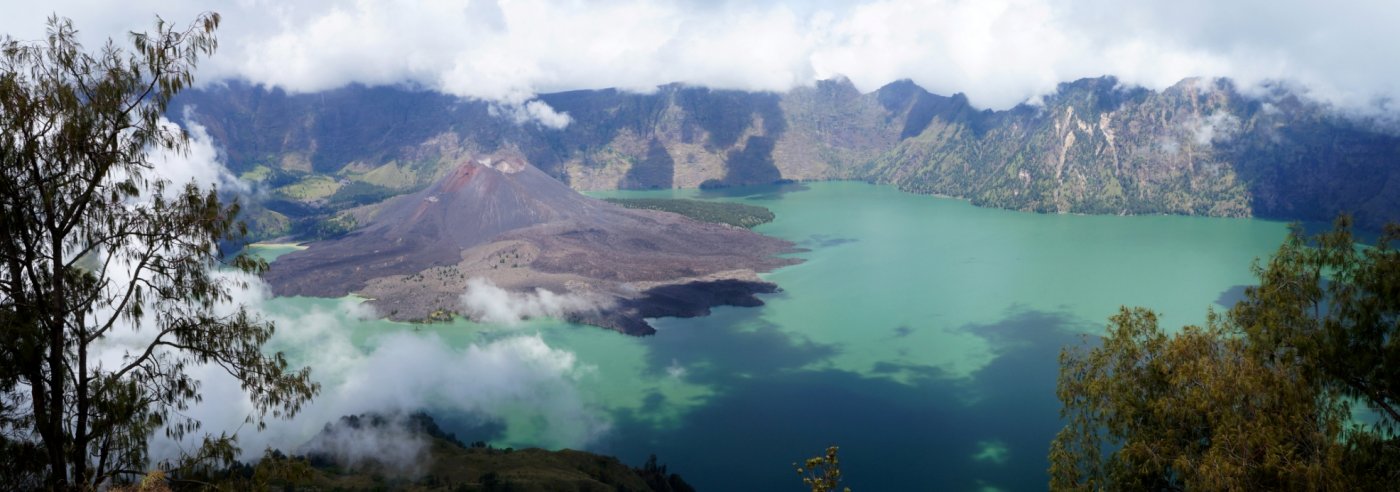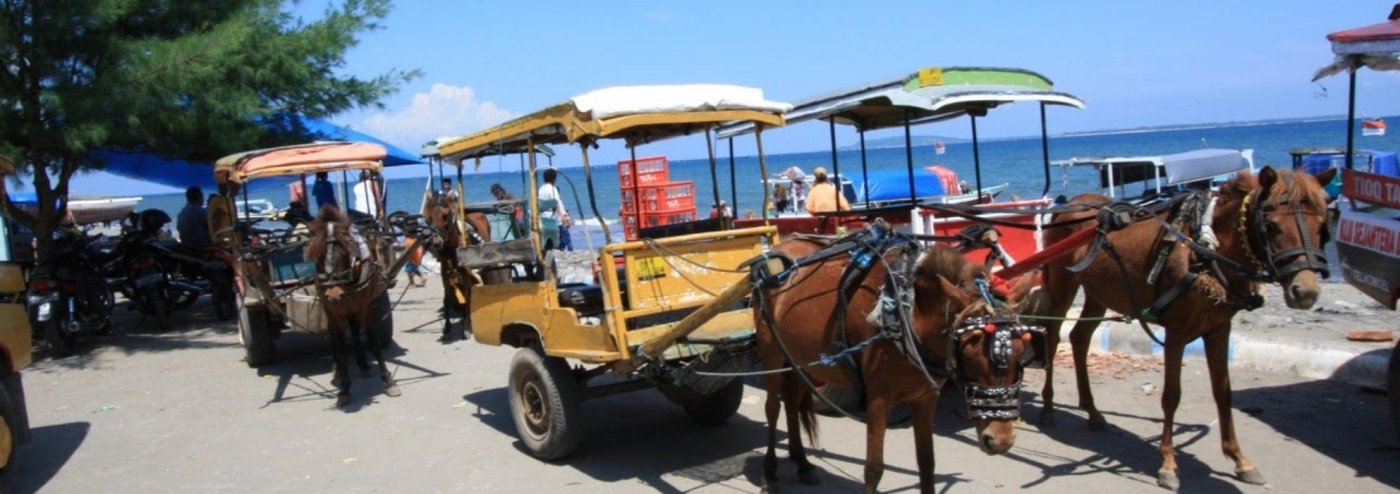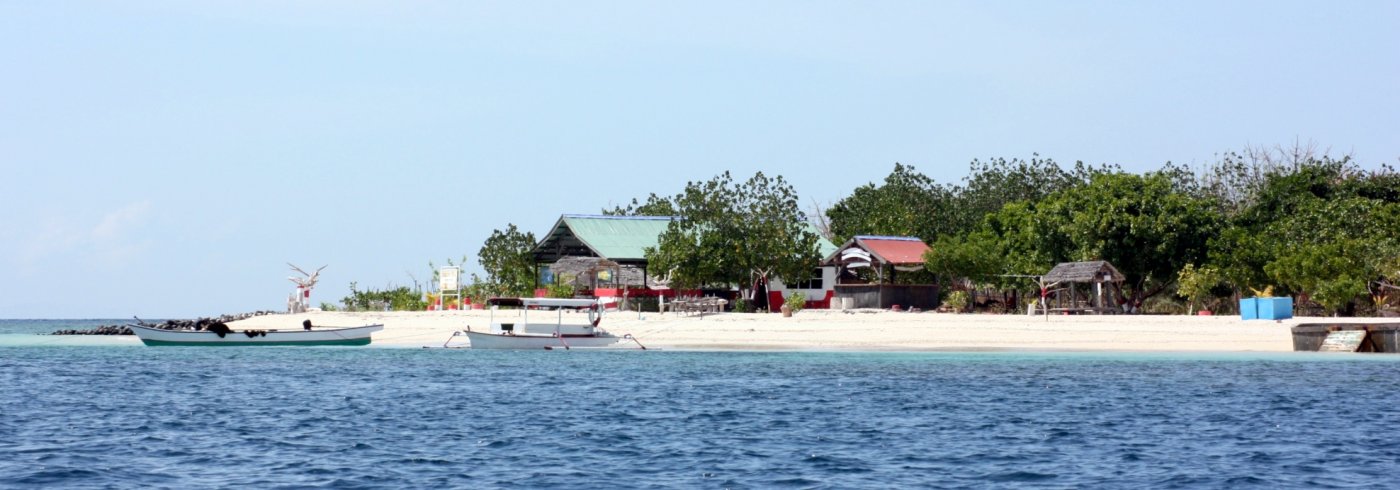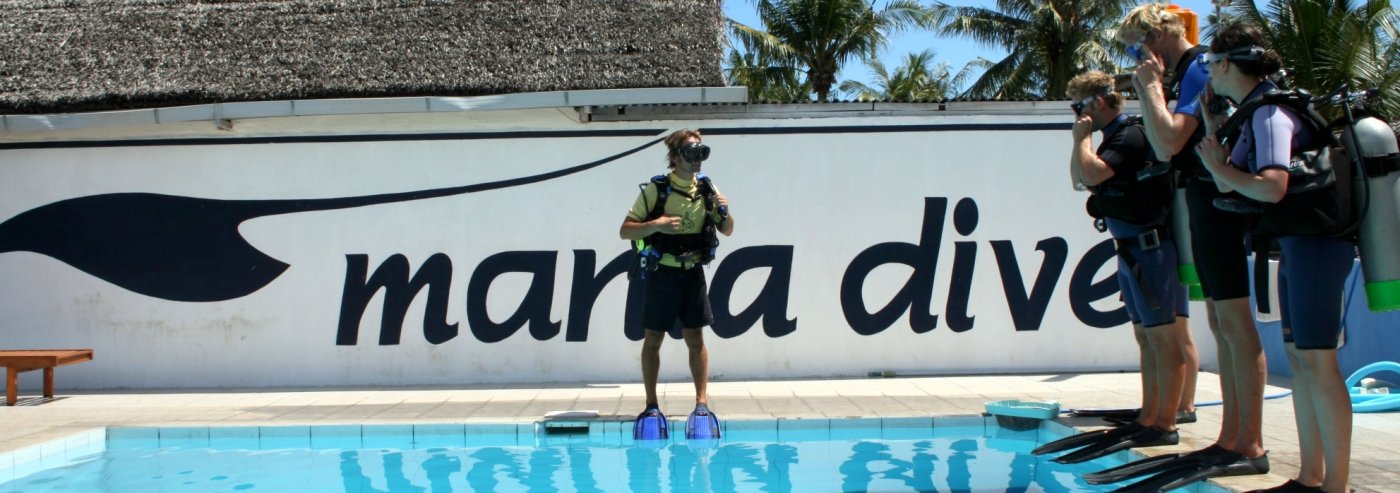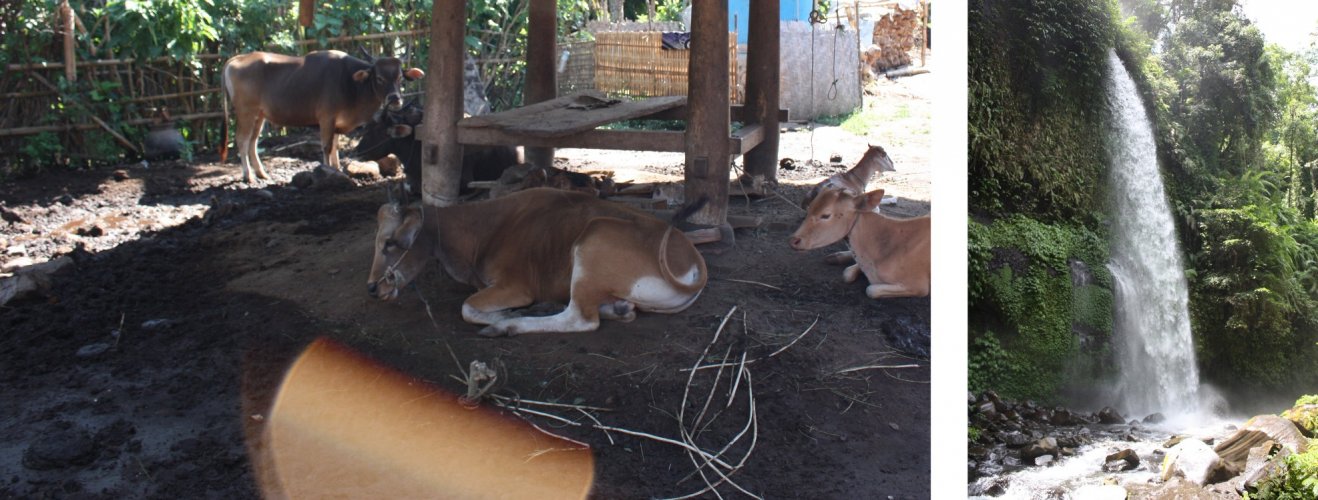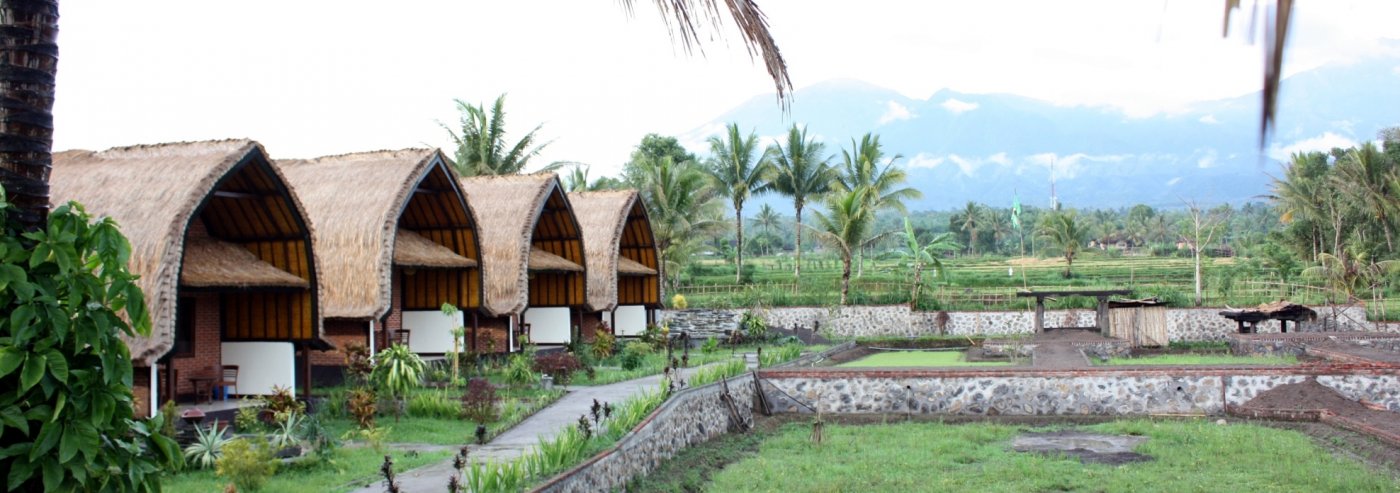Round trip 15 days diving Bali and Gili Trawangan
Praya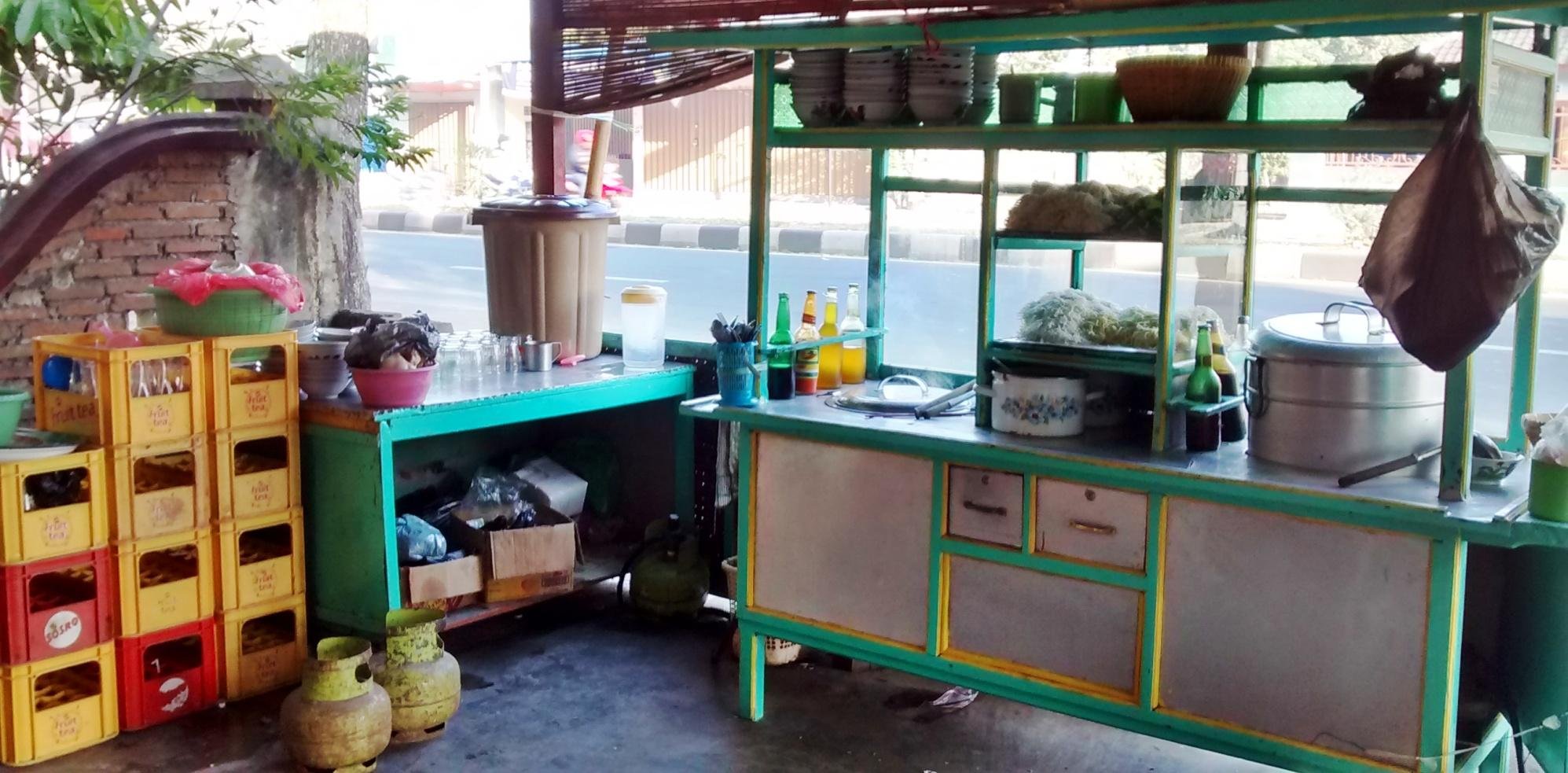 PrayaPraya is the capital of West Lombok. Since 2011, the international airport Praya (LOP) has been established here. Praya International Airport has several daily flights to Bali, Jakarta and other Indonesian cities and several times a week to international destinations such as Singapore.Gili Trawangan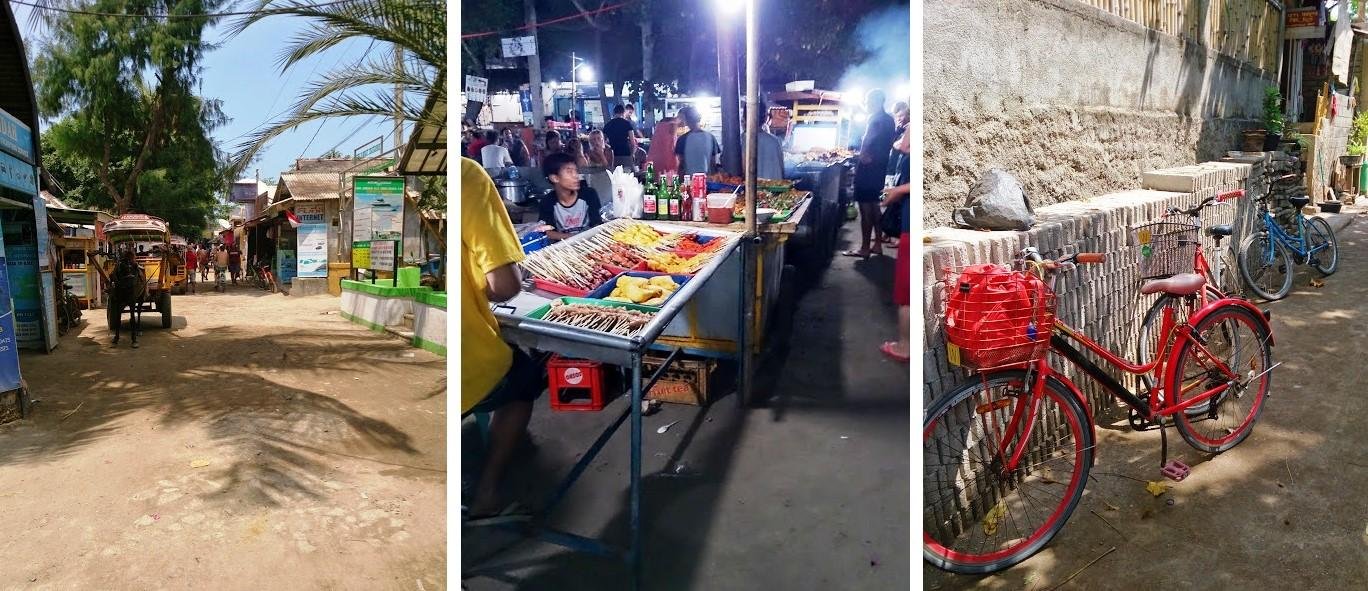 Gili TrawanganGili Trawangan is the biggest of the three Gili islands and is accessible by boat from both Bali and Lombok.There are many shops, diving schools, restaurants, lounge bars and excursion offices, in short there is plenty to do on Gili Trawangan. If you’re looking for some more tranquillity, then one of the other Gili islands is probably more suited to you. Gili Trawangan can be very noisy in the evening. Every night there’s a reggae band playing on the beach. The atmosphere on the island has very little to do with Indonesia. 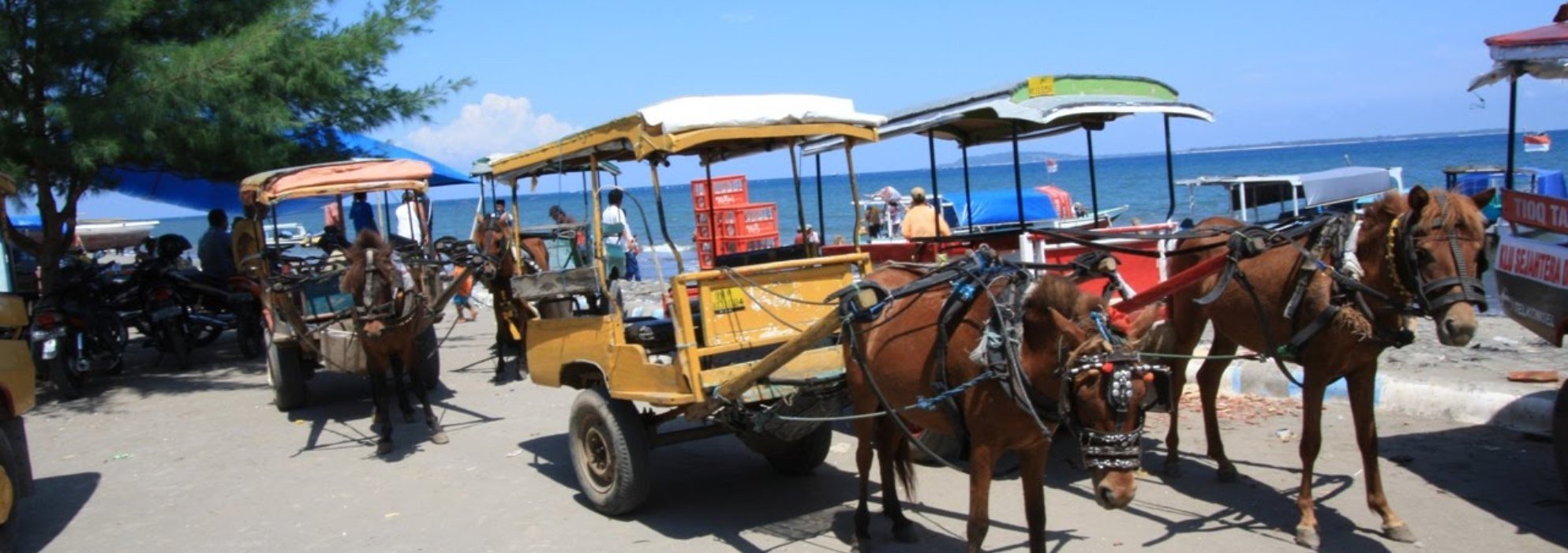 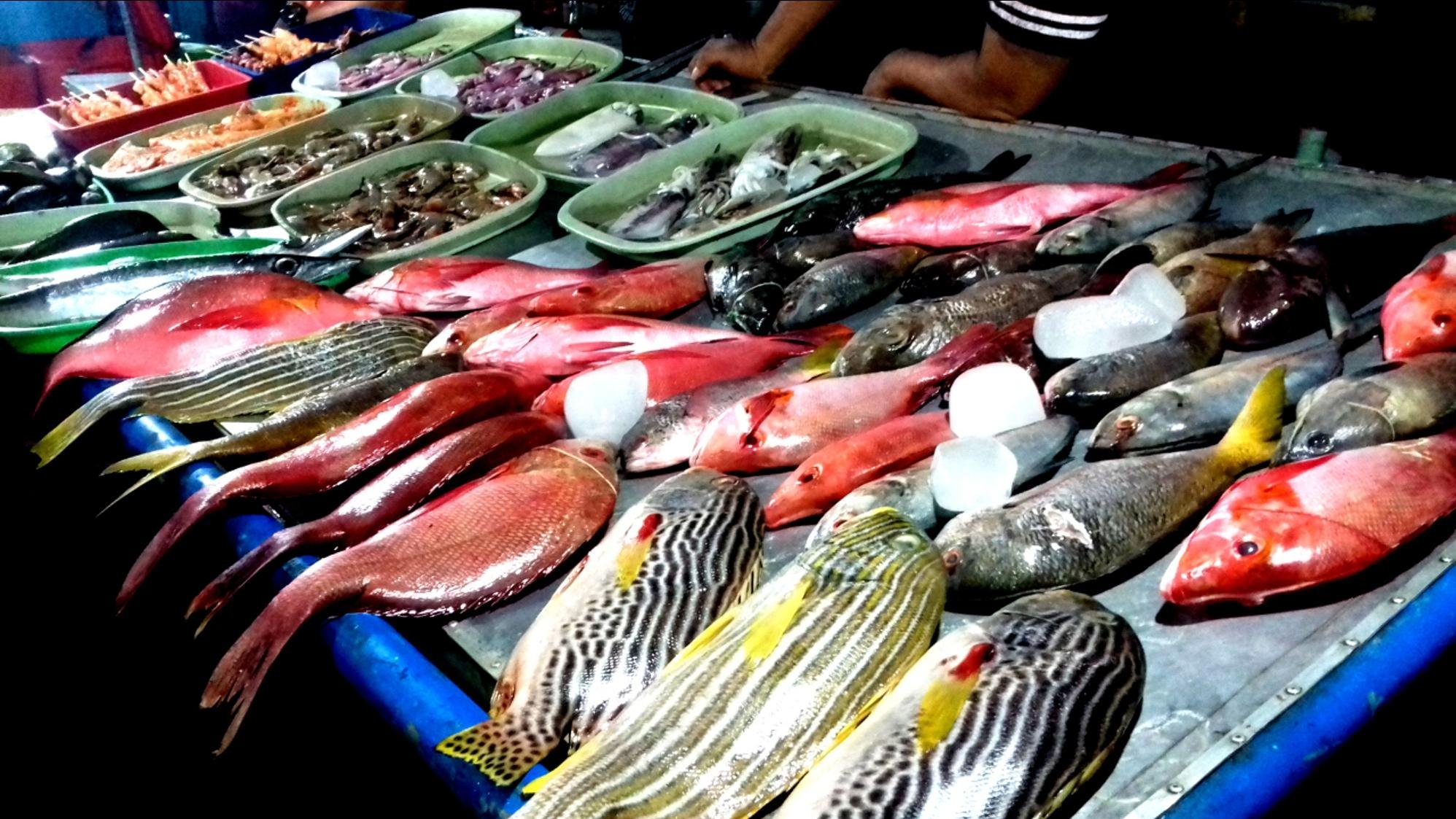 Favourite restaurantAccording to Vera, the place to eat is the Gili Trawangan night market. You will find local Sasak specialties and, for sure, a lot of fish and shellfish.Good to knowThe island is known as the party island for young people, especially during the busy holiday season. But if you stay a little outside the busy main street it’s much quieter.On none of the Gili islands are motor vehicles, everything is done on foot, by bike or by Cidomo (horse-drawn carriage). If you want to go into the sea, be careful. There are sharp little stones and pieces of coral in the shallow water and you often have to walk a bit to reach deeper water. There are several ATMs on the island.. In general there’s no fresh water on the islands for swimming pools and bathrooms, though the more luxurious hotels do often have fresh water to rinse the salty water off. Dive spots Gili islands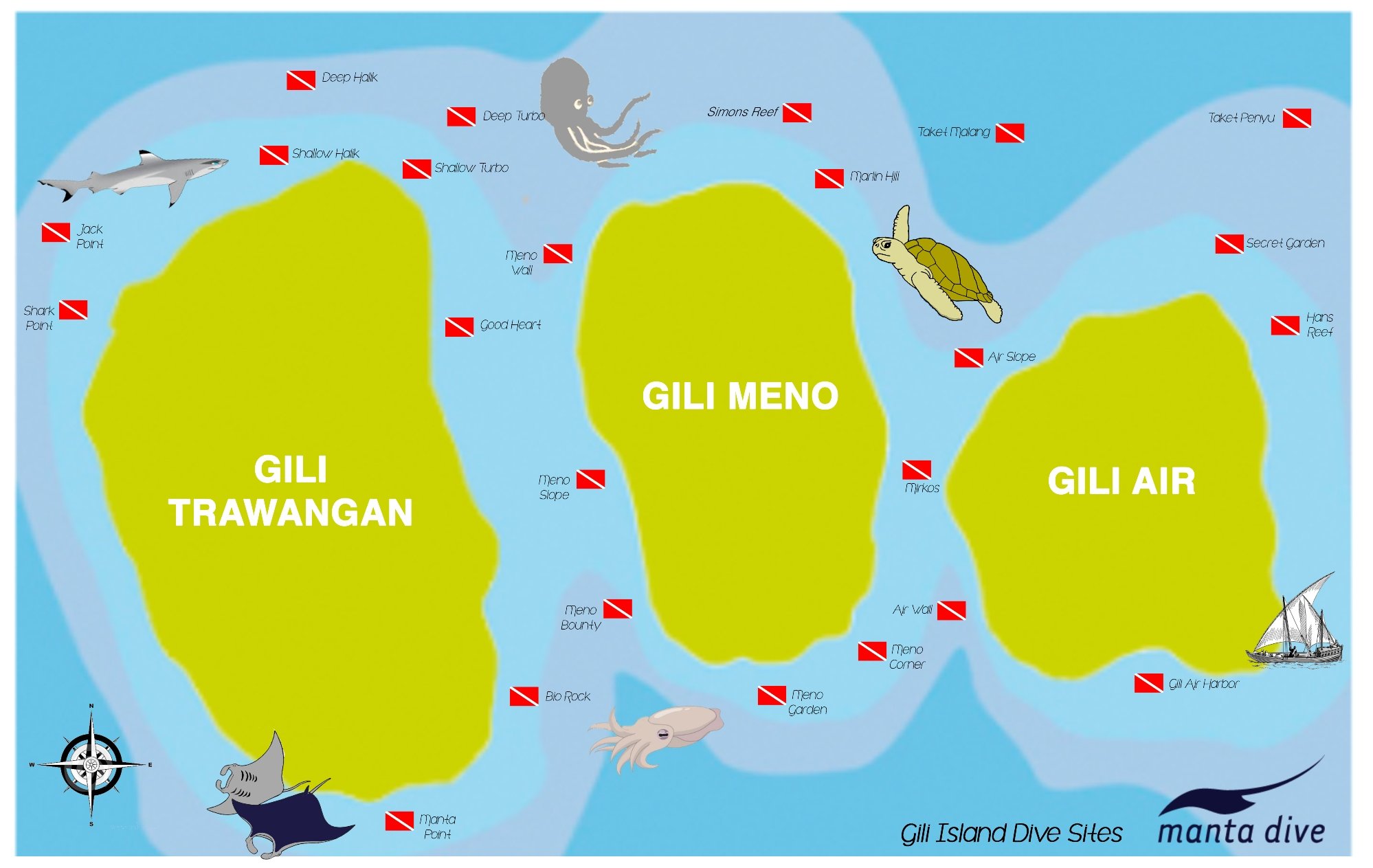 Diving at the GilisDiving at the Gilis is very worthwhile for both beginners and experienced divers. With 20 dive spots there’s plenty of choice.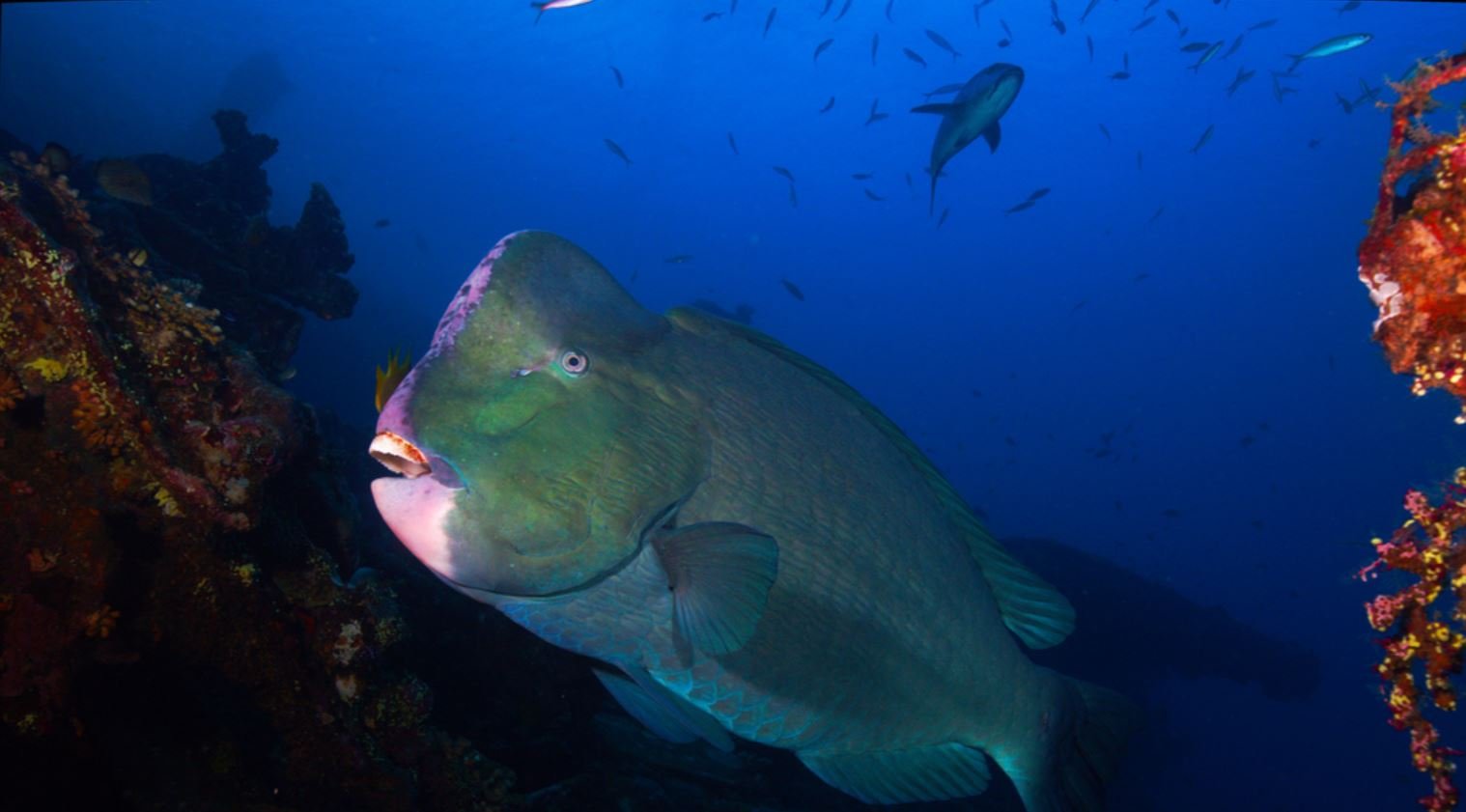 HalikHalik is situated on the North east of Trawangan; a steep slope starting at 5m and ending up in a series of canyons in the deeper parts. This site is perfect for multilevel or drift dives. Beautiful formations of hard coral are found in the shallows, along with Lionfish, Fusiliers, Banner fish, Moray Eels, Coral Grouper and Bumphead Parrotfish (around the full moon). Green sea turtles and Hawksbill turtles are literally everywhere! Deep Halik, the deeper part of Halik reef is for the more experienced divers, here you will be able to find beautiful soft corals, many types of Grouper, Batfish, Trumpet fish, Octopus, White tip / Black tip reef sharks, Eagle Rays and some times Mantas can also be spotted.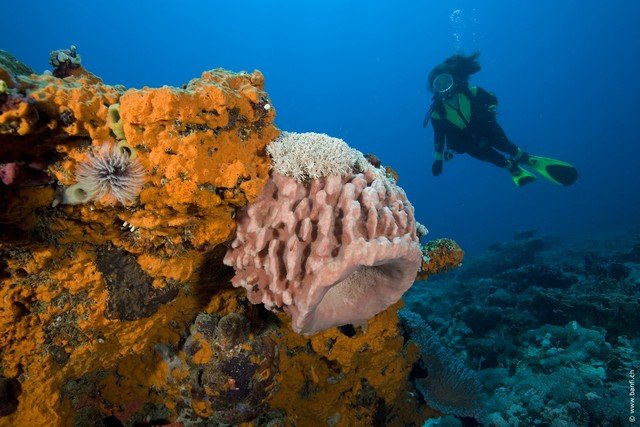 Hans reefHans Reef is located on the North of Gili Air, it's a gentle sloping reef with a white sandy bottom, various sized coral bommies and rocky outcrops are dispersed over the site. The maximum depth is 24m with an average depth of 14m; this dive site is suitable for all certification levels. Hans Reef is a must for macro photographers or those of you who wish to see some of the smaller and stranger marine life. Hans Reef boasts a wide selection of juvenile fish such as Batfish, Angelfish, Boxfish, Frog fish, Leaf Scorpion fish and if you look carefully, it is common to also spot Sea Horses, Black spotted morays, pipe fish, Mantis Shrimps and a variety of Nudibranchs.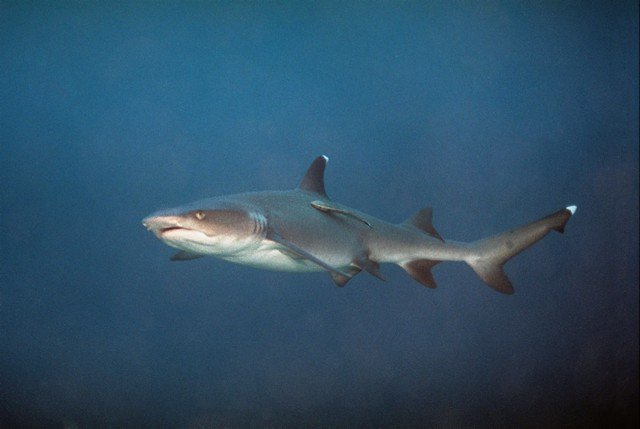 Andy's Reef / Shark PointThis is always a very popular dive site which will offer you a large diversity and abundance in marine on a single dive. Andy's Reef is a vast open dive site situated on the west side of the islands and available to all levels of diver certification. The site starts on a sloping reef, with a series of 3 ridges and valleys (25m, 20m, 18m) running parallel to the shore, leading into the deeper water, Shark Point (28m). An area which truly deserves its name, this is an excellent site for viewing the larger marine life. Turtles are almost guaranteed to be found in the shallower parts among the soft corals. White Tip and Black Tip Reef Sharks, Jacks, Barracuda, Tuna, Trevally, Angelfish, Snapper, Groupers, Batfish, Parrotfish, Triggerfish, Puffers, Surgeonfish, Blue Spotted Stingrays, Moray eels and more are all commonly seen.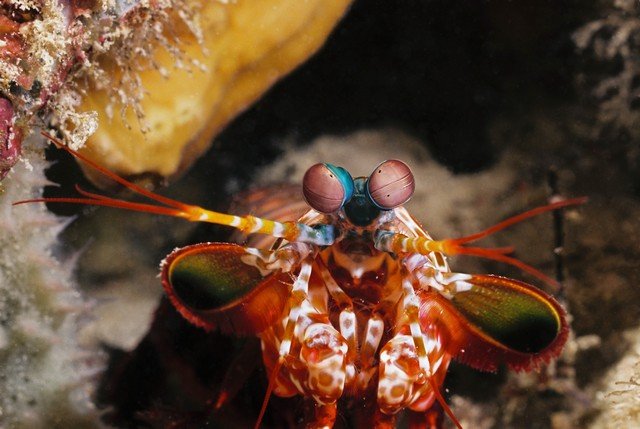 Takat TunangThis reef located to the North-west of main land Lombok has been discovered only recently and is well worth a visit. Takat Tunang is a deep reef suited for the more experienced diver, with a maximum depth of 45m and an average depth of 35m. The dive site is a wall drop off (150m) with a large variety of pristine corals throughout the site, different species of shark are commonly spotted here along with huge schools of pelagic fish, Tuna, Trevally, Barracuda, Jack and large Snapper. Divers will finish their dive on coral plateau at 20m. We recommend you make this dive on Enriched air (Nitrox) as to enjoy the full experience of Takat Tunang wall; however it may be done on air as well.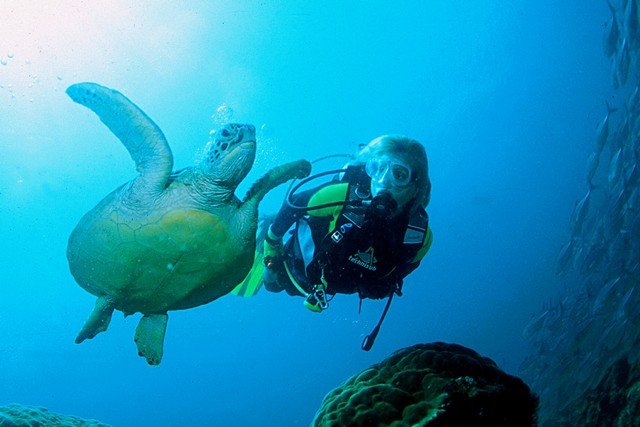 Meno wallSituated on the North West of Gili Meno the shallow part of the site starts at 5m and drops off to a sandy bottom at 24m. You will find soft corals growing all along the reef and this site offer good opportunities to spot turtles, Lionfish, Soldier fish, Clownfish Groupers, Sweet Lips and Snappers all in large quantities and varieties. Meno wall is a favourite for night dives and it is common to spot many kinds of crustaceans, crabs, lobster and a variety of reef shrimps along with sleeping turtles, Bump Heads and other large parrotfish, juvenile cuttlefish, scorpion fish, lion fish, Moray eels and Spanish dancers.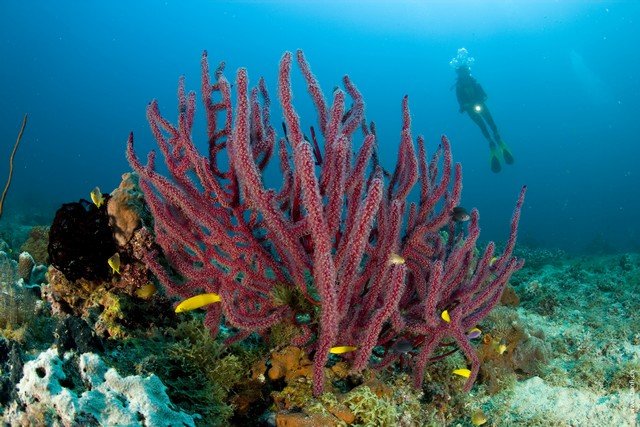 Good heart reefLocated on the East side of Gili Trawangan, this site can be dived by shore or by boat. The maximum depth is 20m with and average depth of 15m which make this site ideal for divers of all expertise levels. This drift dive is made over a gentle sandy slope with an assortment of bommies and low-growing coral gardens. Good Heart reef offers you the opportunity to see bommies and coral overhangs filled with Soldierfish and Copper Sweepers. You will also see numbers of Green sea turtles and Hawksbill turtles eating hydroids. You may spot White tip reef sharks, Giant Trevallies and schooling Barracuda along the deepest parts of the dive site. The shallow area of this reef is popular with snorkelers.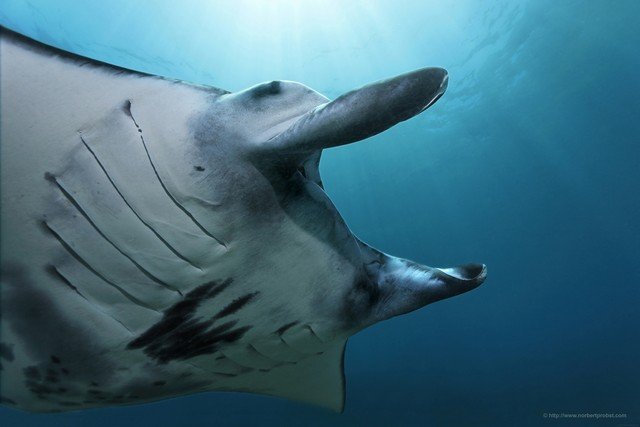 SunsetSituated on the south tip of Trawangan, this site is a gentle slope starting at about 5 m and ending at about 22m, rarely any current; it is definitely a favourite for beginners. A large portion of the reef is marked by giant steps of table coral which shelters the fishes. Some isolated bommies of hard corals and some soft corals. You can spot Sweet Lips, Groupers and Snappers, Angelfish and varieties of Parrotfish. The site ends in a sandy bottom where it's the norm to find White Tip and Black Tip reef Sharks, Stingrays, Turtles and during the rainy season, when the water is rich in plankton, you could have the chance to see passing Manta's.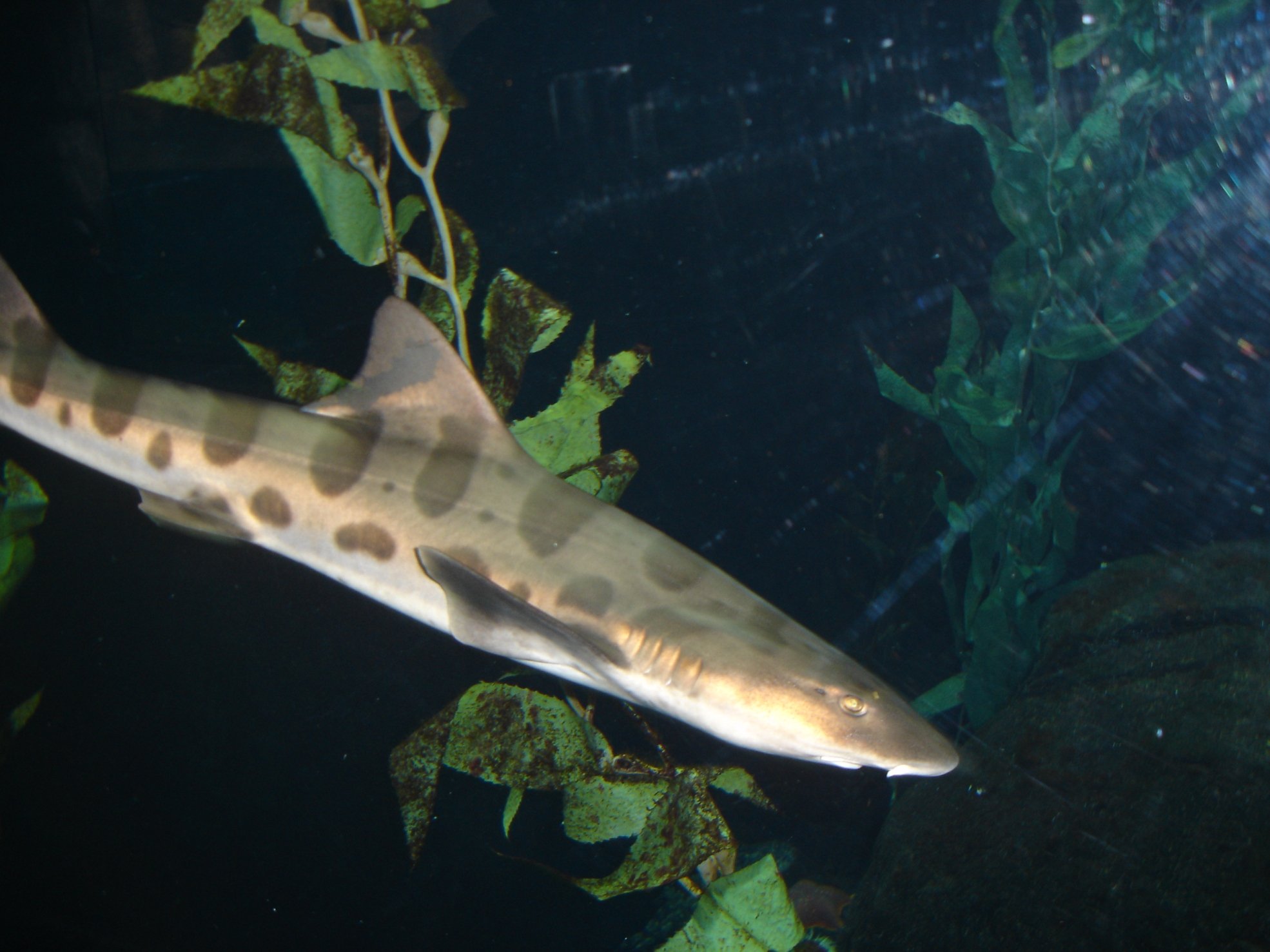 Simons reefLocated to the North of the 3 Gili islands, this site is independent from the reefs closer to the Gili's. Simons Reef is an excellent coral viewing site for experienced divers, the reef is made up of canyons and massive coral mounds roughly in a figure of eight shape rising from a sandy bottom at a depth of 35m. The average depth for this dive site is around 25m and it is the perfect dive site for divers wishing to do Nitrox dives. The canyons are all well formed and abundant in superb coral varieties, such as Acropora, Star and Brain corals, Gorgonian Fans, Plate coral, to name a few. The heads themselves are quite sculpted, with recesses and overhangs. The channels in between funnel the currents, concentrating large numbers of bigger reef and schooling fish species, such as Snappers, Trevally, Jack, Yellowtail kingfish and Tuna. It is also common to spot Parrotfish, Angelfish, Triggerfish, Sweetlips, Cuttlefish Octopus, White tip and Black tip Reef Sharks. Make sure to watch out for the impressively large Great and Barred Barracuda or a couple of Leopard Sharks.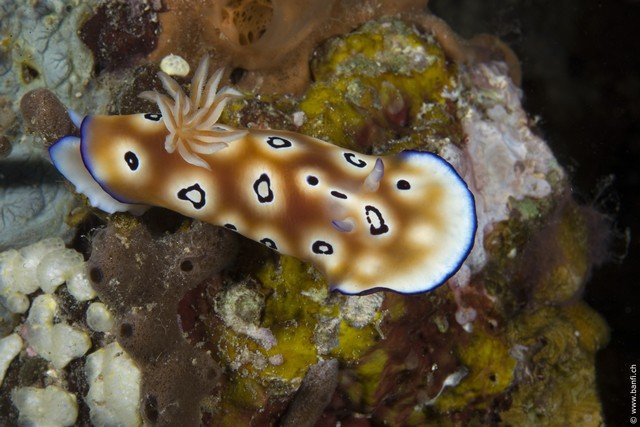 Deep TurboAnother interesting and popular dive site available to the experienced diver, Deep Turbo has a white sandy bottom between large sea mounds and coral canyons. The Maximum depth is 32m with an average depth of 25m. The sea mounds and canyon walls differ in size and offer you an interesting collection of overhangs and outcrops, all covered in a variety of hard and soft corals. Huge sea fans and other interesting coral formations will fascinate you from start to finish. Barracuda, Tuna, Triggerfish, Snapper, and Stingrays can all be expected to show up during the dive and you will be entertained by the hundreds of Garden Eels on the sandy bottom. Like at Simons Reef, you can sometimes spot a couple of Leopard Sharks along with White tip and Black tip Reef Sharks. Deep Turbo is always a favourite as exploring the reef and its marine life makes for a truly fascinating dive.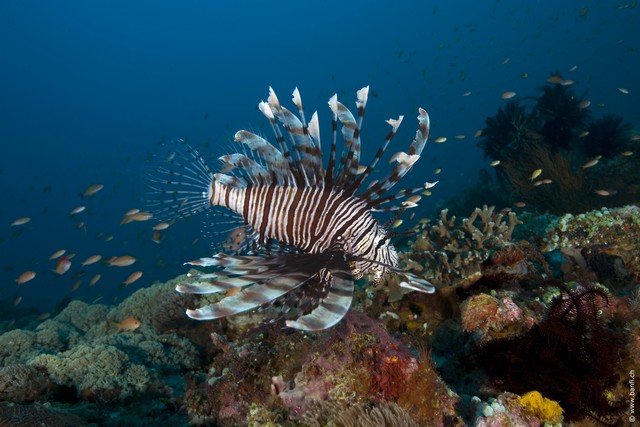 Meno SlopeA drift dive along Meno slope is usually quite a joy ride. You will drop into the channel between Gili Trawangan and Gili Meno and descend to the bottom of the sloping reef at 22m. The average depth for the rest of the dive will be 16m, so this site is perfect for all certification levels. Towards the end of this dive site you will find yourself exploring the Bounty pontoon wreck. The sunken pontoon is a large intact structure at 12m full of interesting marine life and teaming with schools of reef fish. On and around the pontoon you will find a variety of scorpion fish and lion fish, along with various nudibranchs and the odd turtle. Along the sloped reef you find an array of hard and soft corals with healthy amount of fish life to keep you entertained. It is common to spot Eagle rays, Turtles, Snapper, Triggerfish, Moray eels, Banded sea snakes, White tip reef sharks and Giant Trevallies.Candidasa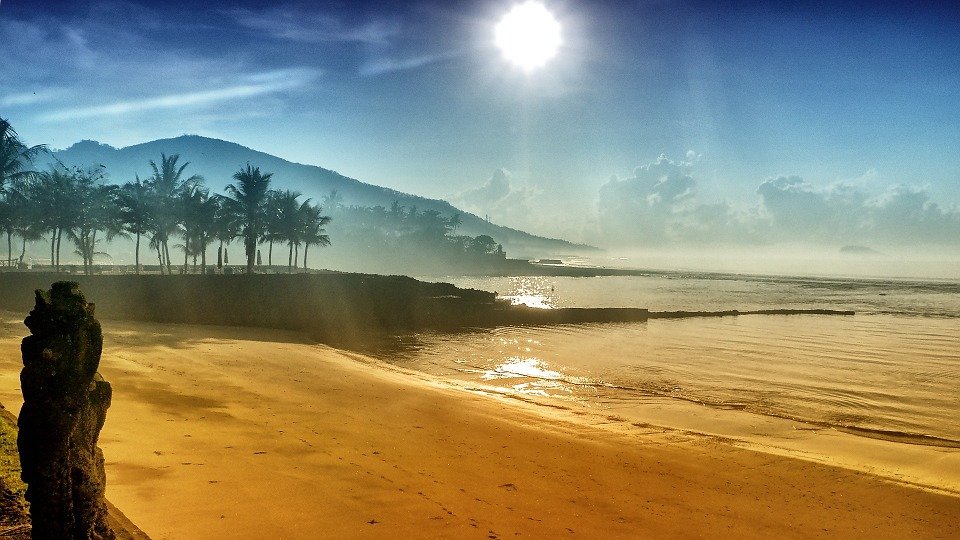 CandidasaCandidasa is situated a little further eastwards, on the south coast of Bali. The beach has been quite eroded by the sea over the last decades, but you’ll still find the peace to relax and unwind here. This small fishing village is little by little becoming very popular and luxurious facilities are popping up. Tourists have discovered that Candidasa a perfect base is for visiting the east coast of the island.The traditional village of Tanganan and the water palace Tirtagangga are a short distance away. Diving and snorkelling are also possible here. Candidasa en Padangbai duikspots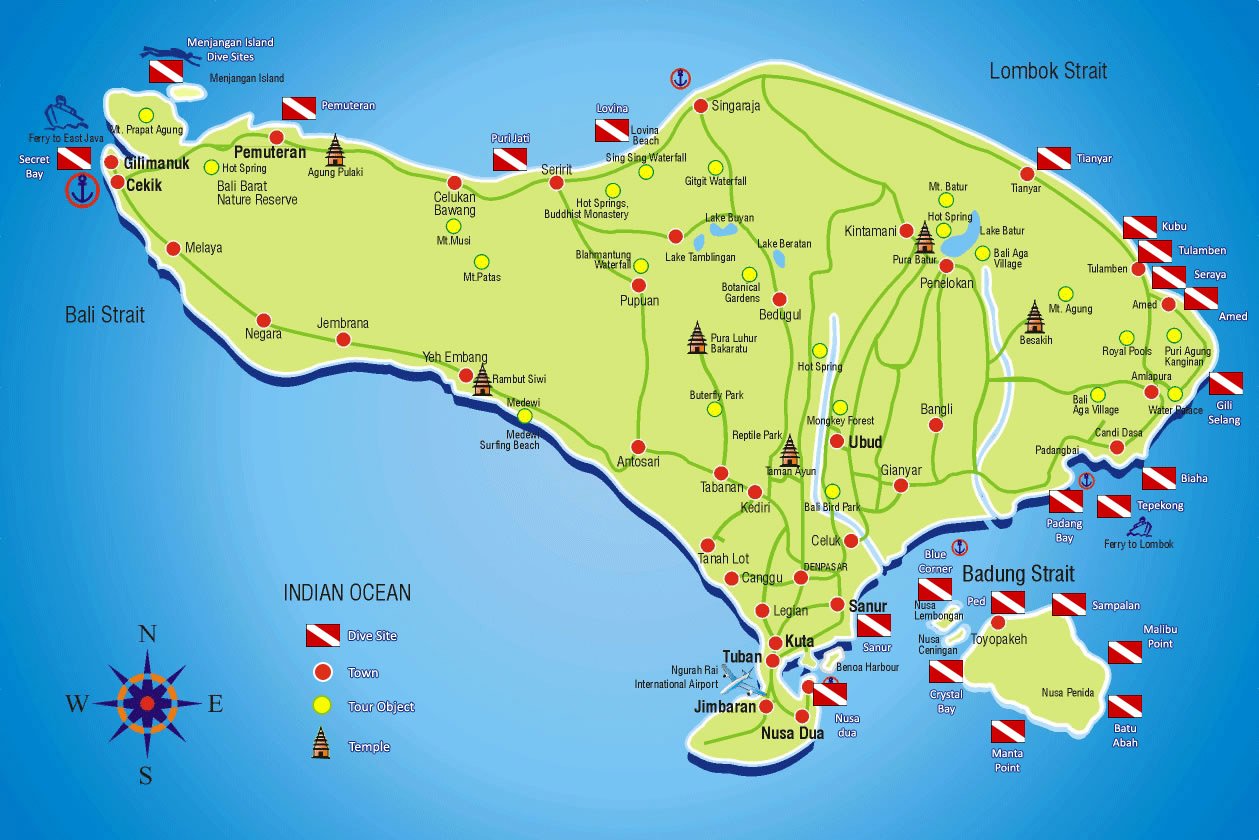 Dive spots East Bali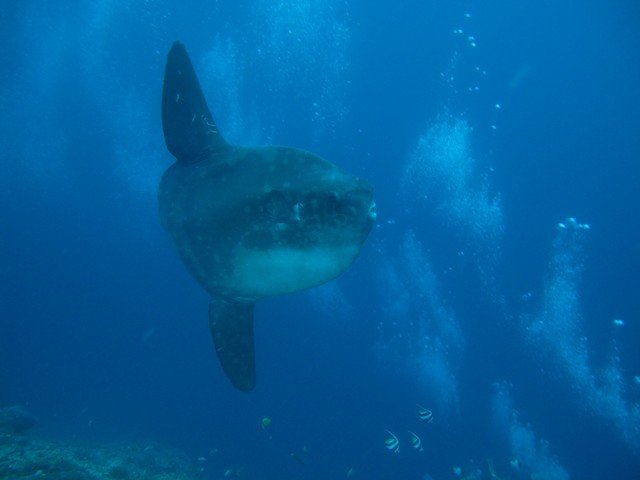 Gili MimpangLocation: East coast of BaliDepth/Visibility: 20 - 40m depth / visibility: 15m Condition: Drift dive suitable for most divers Access: 15 minutes by boat from Padang Bai Average temperatures: November to July 28°C, August to October 21°C This site comprises four rocks that sit just off the coast. The dive site is a steep sloping wall covered with hard and soft corals. There is abundant fish-life with schools of Blue Lined Snapper, Unicorn fish, and Butterfly fish. Moray Eels are commonly found and White-tip reef Sharks are usually in residence. The site also offers an excellent macro life. Mola-Mola (Oceanic Sunfish) can be seen here in cold water conditions that occur in August-September. 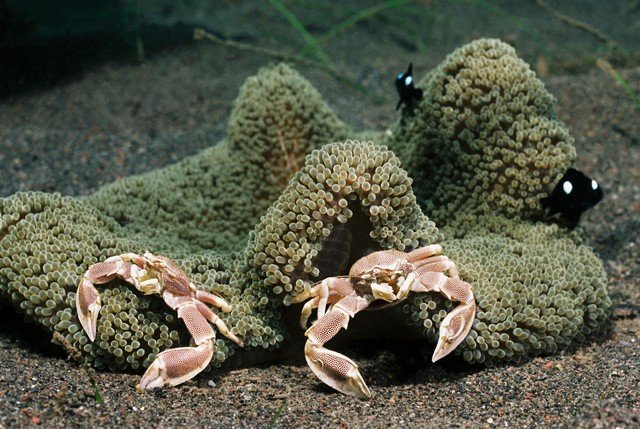 Blue LagoonLocation: East coast of BaliDepth/Visibility: 10 - 25m depth / visibility: 15m Condition: Very gentle drift dive, suitable for all levels of divers Access: 5 minutes by boat from Padang Bai harbour Average temperatures: November to July 28°C, August to October 21°C This is a small beach northeast of Padang Bai. You start the dive on a sandy slope and continue on to a large wall and several large coral outcrops, or bommies. There are always small animals such as Nudibranch and flatworms here, and Frogfish, Leaf Scorpion fish and Ribbon Eels can be seen as well. Night dives are excellent in Blue Lagoon. The dive site offers two different zones for diving - the sandy slope and the large coral blocks - each with distinctive animals living there. Spanish Dancers and some scorpion fish are found on the sandy area and the coral outcrops attract a lot of animals as well. Apart from the sleeping Angelfish there are also Lobsters and Cleaner Shrimps. 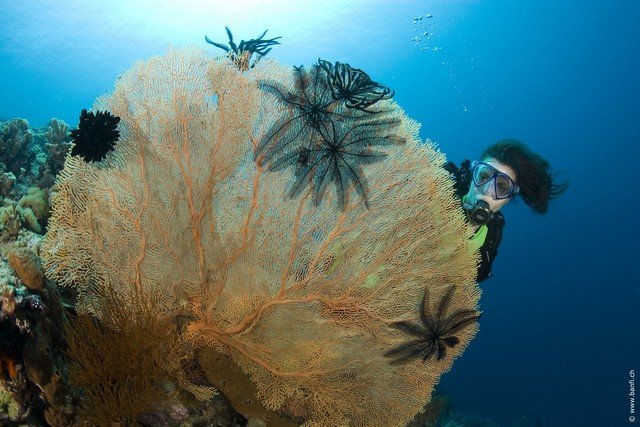 Drop OffLocation: East coast of BaliDepth/Visibility: 10 - 25m depth / visibility: 15m Condition: Very gentle drift dive, suitable for all levels of divers Access: 5 minutes by boat from Padang Bai harbour Average temperatures: November to July 28°C, August to October 21°C Drop Off offers a mix of sandy slope and wall. The slope and wall are covered with filter feeders like Feather Stars, Brittle Stars and Basket Stars and there are always crabs and shrimps crawling among them. There is an abundance of Anemone fish, and Octopus and Cuttlefish are also often seen here. Night dives are also excellent in Drop Off. Spanish Dancers, Lionfish and other predators are seen at night. 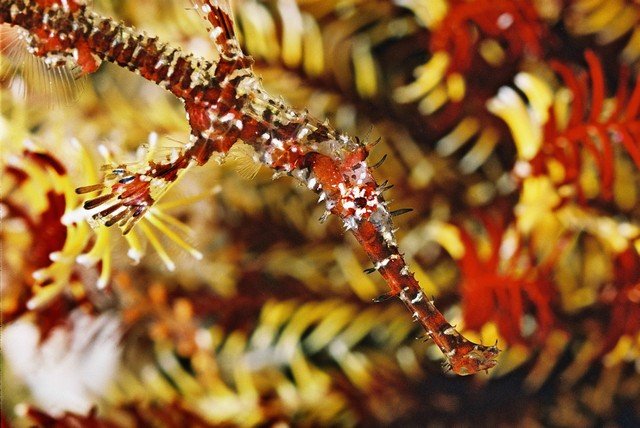 Bias TugelLocation: East coast of BaliDepth/Visibility: 10 - 30m depth / visibility: 20m Condition: Very gentle drift dive, suitable for all levels of divers Access: 5 minutes by boat from Padang Bai harbour Average temperatures: November to July 28°C, August to October 21°C Bias Tugel lies south of Padang Bai. This is a steep slope nicely covered with corals and sponges. Look on the outside of the large barrel sponges for Wally's squat lobster (Lauriea siagiani) and on the Muricella gorgonians for Pygmy seahorses. 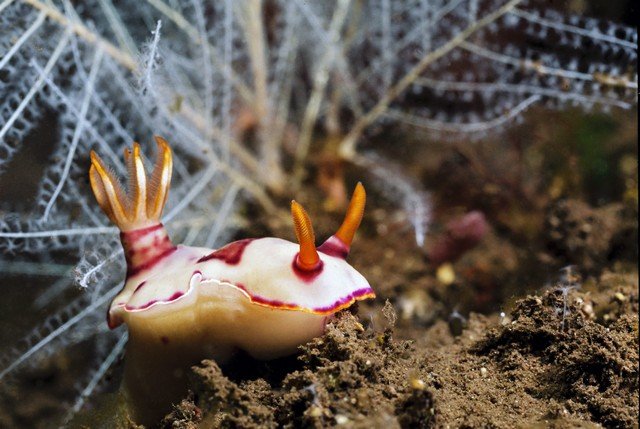 Gili BiahaLocation: East coast of BaliDepth/Visibility: 20 - 40m depth / visibility: 20m Condition: Drift dive suitable for advanced divers Access: 20 minutes by boat from Padang Bai Average temperatures: November to July 28°C, August to October 21°C There is a blowhole on this rocky outcrop which spouts jets of water, so Biaha looks like a large whale! This dive site is not for beginners. The inside area of the crescent (the east side of Biaha) has a cave large enough for several divers to enter (4 to 5 m high). In the cave there are nearly always several White-tip Reef Sharks, often sleeping. Nudibranch are found among the corals on the wall. Mola-Mola (Oceanic Sunfish) can be seen here in cold water conditions that occur in August-September 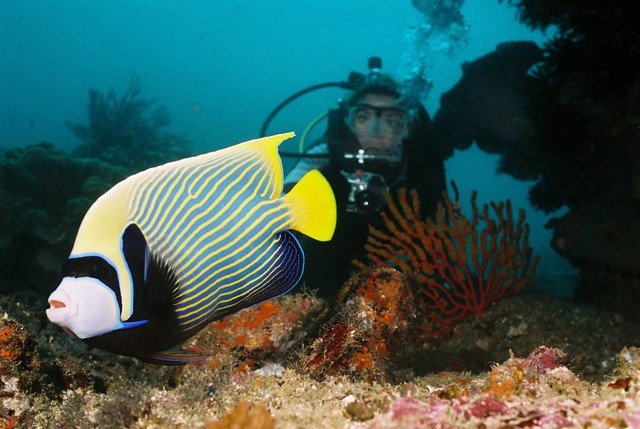 Gili TepekongLocation: East coast of BaliDepth/Visibility: 20 - 40m depth / visibility: 15m Condition: Drift dive suitable for advanced to experienced divers Access: 15 minutes by boat from Padang Bai Average temperatures: November to July 28°C, August to October 21°C The dive site is a steeply sloping wall along the north and east faces of the island. There are several caves at depths of 15-30m in which sharks are occasionally found. Gili Tepekong has excellent coral cover with extensive stands of stag horn coral (acropora) and massive bommies as well as soft corals. Angelfish, Moorish Idols and Butterfly fish are commonly seen. A more demanding dive is to be had in the Canyon at the southwest side of the island. This site is notorious for its unpredictable currents and requires perfect timing and knowledge of tide tables to do safely. The canyon itself is a steep split in the south side of a submarine reef extending out from Tepekong. The reef slopes down steeply from 9m to 25m, where the lip of the canyon begins. The canyon drops down to the floor at a depth of 32m.The floor is strewn with massive blocks of rock with many outcrops and pinnacles covered in hard coral. The currents here attract schools of feeding fish with huge aggregations of Sweetlips, Snapper, and Surgeonfish. There are always masses of Fusiliers and ever present predators such as Trevally, Groupers and the occasional White-tip Reef Shark. The site is rich in Anthias, Basslets and Lionfish. Usually there are strong currents, so this site is for experienced divers only and conditions have to be right to dive here. Mola-Mola (Oceanic Sunfish) can be seen here in cold water conditions that occur in August-September Denpasar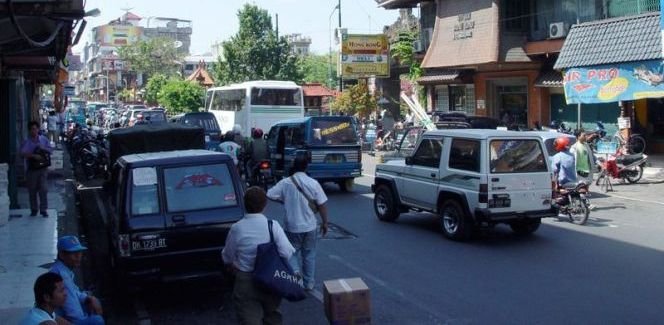 DenpasarDenpasar is the busy capital of Bali.Besides some museums and the market there aren’t many tourist attractions in the capital, though you can do some great shopping for cheap prices. |

